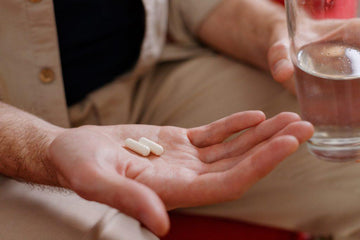Citrulline malate is a combination of the amino acid citrulline and malate, an organic acid. This compound is often used as a sports supplement to increase performance and promote recovery. Here is the most important information about citrulline malate, its benefits and uses.
What is citrulline malate?
Citrulline is a non-essential amino acid that is formed in the body from ornithine and carbamoyl phosphate. Malate, also known as malic acid, is an organic acid that plays a role in the Krebs cycle. Citrulline malate combines these two substances to take advantage of their synergistic effects.Benefits of Citrulline Malate
1. Increased nitric oxide production:- Citrulline is converted into arginine in the body, which increases the production of nitric oxide (NO). NO dilates blood vessels, improves blood flow, and can increase the supply of oxygen and nutrients to muscles during exercise.
- By improving blood flow and reducing lactic acid formation, citrulline malate can increase aerobic and anaerobic endurance, leading to longer and more intense workouts.
- Citrulline malate may help reduce muscle fatigue and speed up recovery after exercise by promoting the removal of ammonia from the body, a byproduct of protein metabolism.
- Malate plays a role in the energy cycle and can support the production of adenosine triphosphate (ATP), the main energy source for muscle contractions.
- Citrulline malate can help reduce muscle soreness by improving muscle metabolism and promoting muscle recovery, allowing for a faster return to training after intense sessions.
- Citrulline malate can boost the immune system by promoting the production of nitric oxide, which plays a role in fighting off pathogens. This can be particularly beneficial during periods of intense exercise when the immune system is under stress.
Application and dosage
1. Before training:- A common dosage of citrulline malate is 6-8 grams approximately 30-60 minutes before training. This can help increase performance and reduce muscle fatigue.
- Some athletes take citrulline malate daily to continually reap the benefits of improved circulation and recovery. The dosage can range from 3-6 grams per day.
- Citrulline malate can be taken in combination with other supplements such as creatine and BCAAs (branched chain amino acids) to achieve synergistic effects and further enhance athletic performance.
Possible side effects
Citrulline malate is generally considered safe and well tolerated. However, some people may experience mild side effects such as gastrointestinal discomfort. It is important to follow the dosage recommendations and consult a doctor if you are unsure.Scientific findings
Several studies have confirmed the positive effects of citrulline malate on athletic performance and recovery. One study showed that citrulline malate can increase the number of repetitions of intense resistance training and reduce fatigue. Another study found that citrulline malate can improve aerobic performance and time to exhaustion. 1. Increase strength:- One study showed that participants who took citrulline malate were able to complete significantly more repetitions of strength exercises such as bench presses than those who took a placebo.
- Another study found that citrulline malate can improve aerobic performance and increase time to exhaustion, suggesting it may be beneficial for both endurance and strength athletes.





